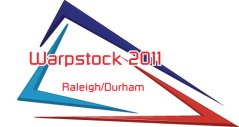The July 1987 issue of PC World magazine featured a centerfold (!) of Microsoft CEO Bill Gates proudly sporting an OS/2 button
Rather than canceling OS/2 outright, IBM let it slip into unofficial limbo. The company released no major new updates but continued to sell and support the software.
Years later, it’s clear that OS/2’s failure stemmed from an array of factors. The early versions were incomplete. The hardware requirements were too stiff. IBM failed to give the software features and marketing that appealed to normal folks.
“The No. 1 problem IBM had was that many in its own sales force had no incentive to sell OS/2,” says Charles Forsythe. “Suppose you are a PC salesperson at IBM in the mid-’90s. You are selling some PCs to a client. These PCs could have either Windows or OS/2 on them. Your commission is the same either way, and OS/2 is a harder sell. What do you sell them?”
(LIST: 10 of the Shortest-Lived Tech Products Ever)
Still, it wasn’t all IBM’s fault. Once Microsoft parted ways with IBM, it saw OS/2 as a threat to Windows and did everything in its power to crush it.
“The issue that mattered most to me,” former Microsoft evangelist Rick Segal told Elizabeth Lesly Stevens of Brill’s Content, “was how to make sure OS/2 never got a foothold to take over our operating system, our franchise.” (Segal also called OS/2 “superior in every way [to Windows], at the time.”) Microsoft lobbied tech journalists, carpet-bombed online forums where OS/2 was discussed and was even accused of creating a fictitious disgruntled IBM customer, Steve Barkto, to do some of its OS/2 bashing.
That was only the tip of Microsoft’s anti-OS/2 iceberg. During United States vs. Microsoft, the Department of Justice’s antitrust suit against the software behemoth, an IBM executive testified that Microsoft prohibited software companies from using Microsoft programming tools to build OS/2 apps, making OS/2 development difficult and costly.
Worse, Microsoft’s contracts with hardware makers charged each company a fee for every computer sold, whether or not it included Windows. That meant that a PC manufacturer that wanted to sell OS/2 machines would have to pay both IBM and Microsoft for the privilege — a double toll that Windows didn’t carry. Microsoft was forced to end this practice only after OS/2 had been neutralized.
Never Say Die
Try though it might, IBM couldn’t force an unwilling world to use OS/2 as its primary operating system. But it also couldn’t extinguish demand for the system simply by declaring that it wasn’t going to sell or support it anymore, an announcement it made in 2005. In 2012, OS/2 is invisible to the naked eye, but it’s still out there, in more places than you’d think.

Wikipedia
In New York City’s subway system, for instance, the travelers who gain entrance by swiping their MetroCards over 5 million times each weekday do so with the assistance of IBM’s theoretically defunct software. “While OS/2 is not running any visible part of the system, it does serve an essential purpose, and there are hundreds of OS/2 computers in service,” says Neil Waldhauer, a consultant who helps New York City Transit and other clients keep their OS/2 applications running.
“OS/2 is not a superior solution in the places where it is still in use,” he explains. “Rather, it is a vital part of a larger system. Many enterprises have big investments in OS/2 programs that have no equivalent on other operating system … For many users, it would be expensive or inconvenient to move years or decades of their data and programs to a new platform. Replacing OS/2 would mean replacing their entire system.”
Oh, and another thing: OS/2, Waldhauer, says, doesn’t crash. It’ll run for a decade without requiring rebooting.
Waldhauer says the checkout systems at Safeway supermarkets still run OS/2. So do certain ATMs, although big banks have largely moved on to Windows. A company called Serenity Systems International sells an operating system called eComStation that’s a licensed, updated version of OS/2, giving users the option of buying a piece of software that’s extant and supported.

Warpstock
Some holdouts stick with OS/2 simply because they like it. For years, an organization called Warpstock has held OS/2 conferences in the U.S. and Europe. Baywarp, the Bay Area OS/2 users’ group, continues to hold monthly meetings. Sites like OS/2 World are still active. In short, it may be idiosyncratic to use OS/2 as a desktop operating system today, but it isn’t impossible — and anyone who does has company.
When IBM announced OS/2 in 1987, nobody would have guessed that its glory days, such as they were, would be over by the mid-1990s. But when the company concluded that OS/2 had failed, it would have seemed equally unlikely that it would make it this far into the 21st century, still viable in its own odd way. Consider it a surprise happy ending: this famously unsuccessful piece of software isn’t finished doing useful work, and may not be for quite some time.
More tech nostalgia on TIME.com:


